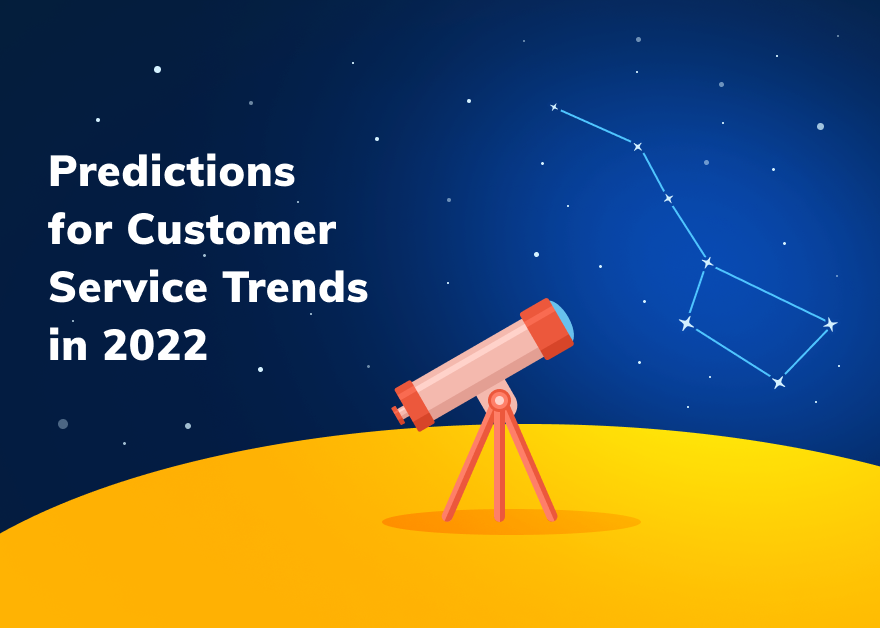
First trend: The significance of omnichannel
Customers value a seamless and positive omnichannel customer experience more than ever these days.
Consumers are accustomed to interacting with goods and services through a variety of channels and gadgets, including smartphone apps, desktop and mobile web browsers, Smart TVs, SMS, and more. Businesses are investing more extensively in developing consistent cross-channel experiences as a result of rising customer expectations.
Consumers expect smaller firms to live up to the high bar that established by major players like Amazon for these high-touch, tailored omnichannel communications. For instance, a consumer might order whole food groceries through the Amazon website, get a push notification or in-app message updating them on their order, and get an email with a digital transaction receipt. Coherence is required when the user experience is spread over several channels.
Real-time delivery updates are now standard practise due to the surge of food delivery apps during the pandemic. Users want to follow the development of their orders from beginning to end and receive the necessary updates across channels, whether you’re delivering a culinary item or a hard commodity.
Unified Business Management
Businesses must also unify and operate in less compartmentalised ways in order to accommodate this trend toward multichannel user experiences. To deliver the seamless and polished experience customers demand, it will be more important than ever to encourage collaboration between product, marketing, and engineering. The same idea applies to corporate technology; in order to flourish, businesses will want a more cohesive tech stack that offers plenty of opportunities for integrations and data exchange.
Trend #2: Personalized advertising is dead
Personalized advertising has its roots in the identification of distinct users across mobile apps and websites during the previous ten years. These features are currently being quickly eliminated by platforms and regulators.
With the most recent updates to iOS, Apple is making it more challenging to gather IDFA and requesting users’ permission for various types of tracking. Google is also doing away with third-party cookies as a tracking tool.
Therefore, we anticipate seeing the following:
increased costs for advertising
Increased mergers and acquisitions of advertising-dependent companies and a greater emphasis on user retention and lifetime value (LTV)
Third trend: the growth of subscription business models
Subscription business models will become more and more common when there is less access to third-party data. Businesses are now being obliged to consider how they can keep current consumers and raise their lifetime value (LTV) in order to achieve reliable business growth rather than trying to acquire as many users as possible through advertising.
As a result, businesses will increase their focus on product development while decreasing their ad spending, which is great for customers. Prior to now, businesses that prioritised mobile invested a significant amount of their expenditures in advertising. Personalized product experiences are now the main focus.
By making significant investments in the user experience and gradually improving your app’s features and value, you may retain users in a subscription-based model. Delivering meaningful, individualised experiences will be crucial in this new environment because businesses will connect with fewer users.
Expect to see these changes as they lead to…
As the internet becomes more concerned with privacy, zero-party and first-party data are gradually becoming more significant.
In the mobile app ecosystem, subscription-based app monetization models will take over as the new norm, and this change has a number of knock-on impacts.
greater commercial consolidation greater bundling of goods and services
increased importance of viral and word-of-mouth growth on app growth
Additional 2021 “Lessons Learned”
The year 2021 altered both the digital landscape and how businesses interact with their audience. Read on to find out what’s changed and why effective communication is so important: Three lessons about customer communication from the COVID-19 pandemic.
With Mok.one, Develop a Scalable Communication Strategy.
Your messaging platform has a direct bearing on your capacity to expand and meet user expectations now more than ever. Mok.one is made to assist you in managing alerts and user communication across all channels, including email, in-app chat, bulk SMS, and push notifications for mobile devices and the web. Without having to perform any technical work, our platform is simple to set up and makes it simple to automate and personalise messages at scale. If you don’t already have one, you can sign up for Mok.one for no cost and start notifying your users of updates right away. Sign up now and see for yourself, don’t take our word for it!